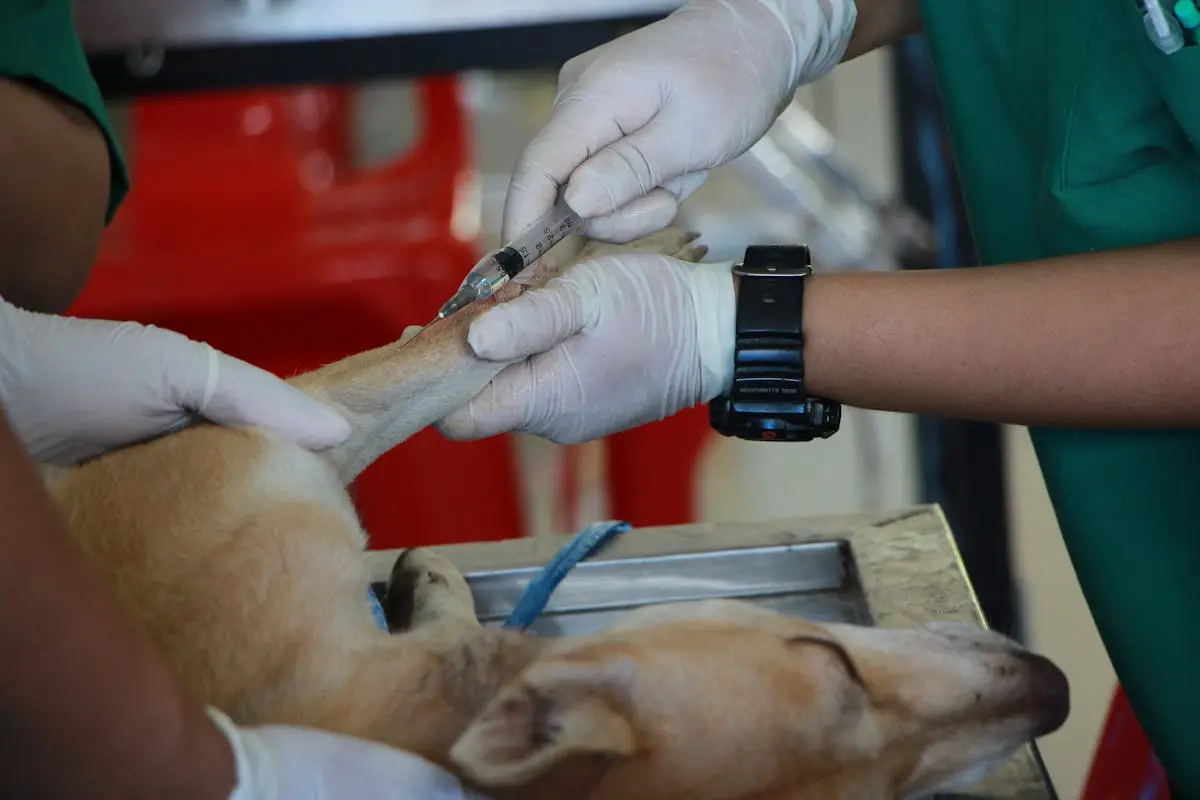Facing sticker shock over prices to have your pet “fixed”? You’re not alone. With the cost of pet ownership on the rise, many pet parents dread thinking about the cost of spay or neuter of a pet. Be aware that delay can cost you more than you think!
The reproductive surgery to have your pet fixed (commonly called a “spay” or a “neuter”) is certainly one of the biggest upfront costs for routine pet care. Understandably, it is difficult for many households to prioritize this significant expense, especially when their dog or cat appears healthy. However, it’s one of the best investments a pet parent can make to save thousands of dollars, and heartache, in the future. Why Spaying or Neutering Your Pet Matters
This life-saving care doesn’t have to be out of reach for your family. Many pet parents are surprised to discover the many resources that are available for pet parents to help with planning and affordability.
Start With Targeted Online Searches
Try searching:
- “low-cost spay neuter [Your City] 2025”
- “humane society spay neuter clinic [Your Province/State]”
Filter results for:
- Non-profit or shelter-run programs: Some animal shelters and geared-to-income veterinary clinics receive government funding and/or charitable donations for people in need, allowing them to run high-volume but safe clinics with reduced pricing.
- Suburban or rural practices: Rural practices often have lower overhead compared to big-city clinics, and this can be reflected in their prices. Searching for options outside of major metropolitan areas can help you save.
- Municipal programs: Humane society (Kitchener Waterloo and Stratford): The Spay Neuter Assistance Program (SNAP) supports low-income households in Kitchener, Waterloo, and Stratford with low-cost spay neuter services.
Ask About What’s Included in the cost of spay or neuter
Many pet parents are surprised to learn that the services included in a spay/neuter can vary from practice to practice and may not be directly reflected in their invoice.
When calling clinics, ask the following:
- “What services will be included in my pet’s surgery?” (Ask them to send you an itemized estimate, if possible)
- “Am I able to opt out of any of the services included in your spay/neuter package in order to decrease the cost?”
Then, refer to the chart below to determine your budget based on which services you value the most.
| Benefit | Estimated Individual Cost | |
| Pre-surgical bloodwork | Screens for hidden health issues so the vet can safely tailor anesthesia and avoid dangerous reactions. | $100-$300 depending on the profile/relevant parameters for your pet (older pets or certain breeds may require more in-depth bloodwork, whereas some veterinarians may be willing to forgo this option altogether for younger and healthy pets) |
| IV fluids during surgery | Help maintain your pet’s blood pressure and hydration during surgery, reducing the risk of complications and speeding up recovery. | $50-$150 depending on the size of your pet |
| E-Collar/Cone or Surgical Onesie | Prevents your pet from licking or biting their incision, which protects against infection and costly wound reopening. Surgical onesies are more comfortable but are not always anatomically suitable. | $10-70 |
| Pain Management During and/or After Surgery | Keeps your pet comfortable and speeds healing by reducing stress and inflammation. | $20-60 for take-home medication. Price varies for pain management during surgery. |
| Monitored Anesthesia | Ensures your pet’s vital signs are tracked throughout surgery, so any changes are caught and corrected immediately. Ask for the qualifications of the person monitoring anesthesia; a Registered Veterinary Technician will be more highly trained than an assistant. | Price varies |
Keep in mind that other factors may influence pricing such as:
- Surgical Load – Clinics that do more surgeries in a day with fewer medical team members can keep prices low due to prioritizing efficiency to reduce costs. However, fewer surgeries each day and a larger surgical team generally means more attention paid to your pet.
- Facilities and Equipment – The equipment that your veterinary team uses and the way their hospital has been designed can have an effect on surgical outcomes. For example, some hospitals may have a species-specific, separate, monitored surgical recovery room to ensure that your pet is recovering in a quiet environment under watchful supervision. This reduces the risk of choking, distress, or complications during recovery, but offering this option comes with increased overhead for the clinic, which may be reflected in their prices.
- Hours of Operation – A clinic that is open later through the week and on weekends may have a higher surgical cost, but will be available to answer your questions during your pet’s healing process and may spare you a trip to the emergency clinic if you experience any post-surgical complications.
Ensuring you are fully informed on their surgical protocols helps you compare value, not just the sticker price, and choose which inclusions are most important to you.
Flexible Payment Options can spread the cost of spay or neuter
Some veterinary clinics accept:
- ScratchPay, CareCredit, or iFinance – financing tools that break up the cost into smaller monthly payments.
- Puppy/kitten wellness plans – subscription-style packages that bundle spay/neuter with vaccines and checkups.
- Pre-payment plans – many clinics allow you to pay in installments ahead of time, like a savings account for your pet’s surgery.
Ask the veterinary clinics that you contact if you’d have the ability to pursue any of these options to help manage the upfront cost of surgery.
Explore Subsidized Programs in Your Area
In Canada and the U.S., many Humane Societies, SPCAs, and rescue organizations run subsidized clinics. You can simply google low cost veterinary clinics or search for spay and neuter support programs. These types of programs quickly fill up, so plan ahead, apply and book well in advance. Examples:
- Ontario SPCA: Offers flat-rate spay/neuter fees at participating locations across Ontario. On the first Month of every Month, they will open bookings for both Ontario SPCA and Humane Society spay/neuter locations. Age for dogs and cats should be between four months and five months with limited weight (dog should be less than 30kg) for this program.
- Humane Society: Go to a search engine like Google and type in “Humane Society” along with your city or town’s name. London & Middlesex “Old Oak” campus has a fully equipped veterinary hospital, which as of September 2025 was not yet open to the public. However, more resources are expected to be available for the community in the near future due to this exciting new development.
- Municipal Programs: City of London offers a subsidized Spay/Neuter program: This program is intended to ease the financial burden some London households face when considering spaying or neutering their pet. Check details carefully. There is no dog program at the time of this posting.
- Progressive Animal Welfare Services: when funds are available, offers subsidies for qualified low income pet owners in a few Ontario counties (Middlesex, Brant, Hamilton and Waterloo)
Check your local humane society or SPCA website for eligibility details.
Don’t Delay or you will increase the cost of spay or neuter
The larger and more sexually mature your pet gets, the more complex, and therefore costly, the surgery becomes as well.
Simply put, larger pets require more drugs to sedate, so this will be reflected in the price. Therefore, it will be much less expensive to neuter your puppy when he is 20 kg than when he is full-grown at 50 kg!
Sexual maturity also means a more complex surgery. In particular, female dogs become much more challenging to spay after their first heat due to increased blood vessels and fat in the region. This means a more experienced surgeon, longer anesthesia, and additional medications are required.
If your pet is already at adulthood, it is not too late to save. Keep in mind that, in intact female pets, infection of the uterus (pyometra) is common. In this situation, life-saving surgery is required. This emergency surgery is even more delicate, and therefore more expensive.
Always talk to your veterinarian about the best time to spay or neuter your pet. Doing so at the recommended time can save money and improve outcomes for your furry family member.
Don’t forget: Spaying or neutering is far more than a single expense, it’s an investment to minimize long-term pet ownership costs. Knowing where to look and what questions to ask can help put these life-saving preventative procedures within reach for your family.





